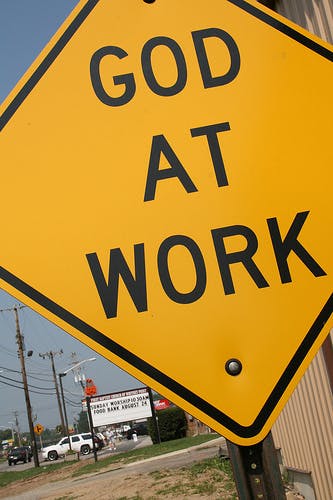By Eric B. Meyer
“An employee walks into a hospital wearing a Jesus lanyard…” Well, they can’t all begin with a priest, minister and a rabbi walking into a bar.
So, today we’ll discuss the test to determine whether an employee may lawfully don religious items at work, and, find out whether the hospital worker in this case has a potential religious discrimination claim (Hint: he does).
In Hickey v. SUNY Stony Brook Hospital, the Plaintiff, a Born-Again Christian, regularly wore a lanyard around his neck printed with the phrase “I (heart) Jesus.” Several times, Plaintiff was asked to remove the lanyard. Each time, he resisted and complained.
Ultimately, Plaintiff was fired for what the Defendant contended were “several incidents and his unsatisfactory job performance.” Plaintiff subsequently sued for religious discrimination.
Plaintiff met initial burden proving discrimination
Federal law generally requires that an employer accommodate an employee’s religious beliefs. At a minimum, an employee must demonstrate three elements; namely, that:
- Their religious beliefs are sincere;
- They informed his employer about those beliefs; and,
- They were disciplined for failing to comply with a conflicting employment requirement.
Here, there was enough evidence to suggest that the lanyard was a necessary expression of religion. That’s usually a jury call anyway. An exception that the court noted involved this case where a 14-year employee who had always been clean shaven showed up to work one day with a beard and refused to shave it using religion as an excuse.
As to the notice requirement, much like an employee requesting FMLA leave doesn’t need to specifically mention “FMLA,” an employee need only provide enough information about his religious need to permit the employer to understand the existence of a conflict between the employee’s religious practices and the employer’s job requirements. The court found that the Defendant knew that the lanyard was a necessary expression of Plaintiff’s faith.
Lastly, the Court determined that a jury could conclude that the Plaintiff was terminated for wearing the lanyard based on documentation mentioning that the Plaintiff was asked to remove the lanyard.
What if the accommodation would create a hardship?
An employer may escape liability by showing that religious accommodation would create under hardship on the conduct of the employer’s business.
Here, Defendant argued that it could not reasonably accommodate Plaintiff’s need to wear the lanyard because doing so would jeopardize Defendant’s ability to provide services in a religious neutral manner. In response, the court quickly dismissed that argument noting that other courts, like this one, have consistently held that religious accommodation under Title VII does not violate the First Amendment’s Establishment Clause.
Thus, the court determined that Plaintiff had viable claims for religious discrimination that he could present to a jury.
For more on religious accommodations in the workplace, check out the EEOC’s “Questions and Answers: Religious Discrimination in the Workplace”
This was originally published on Eric B. Meyer’s blog, The Employer Handbook.
